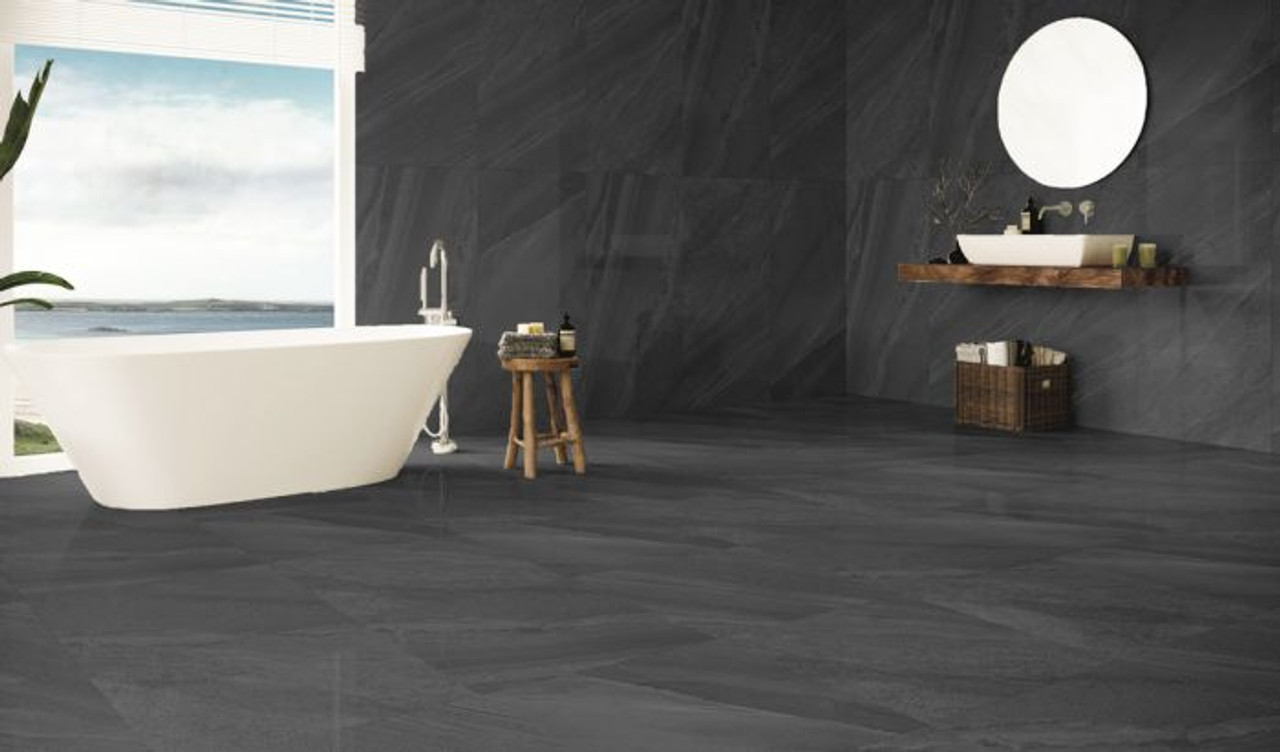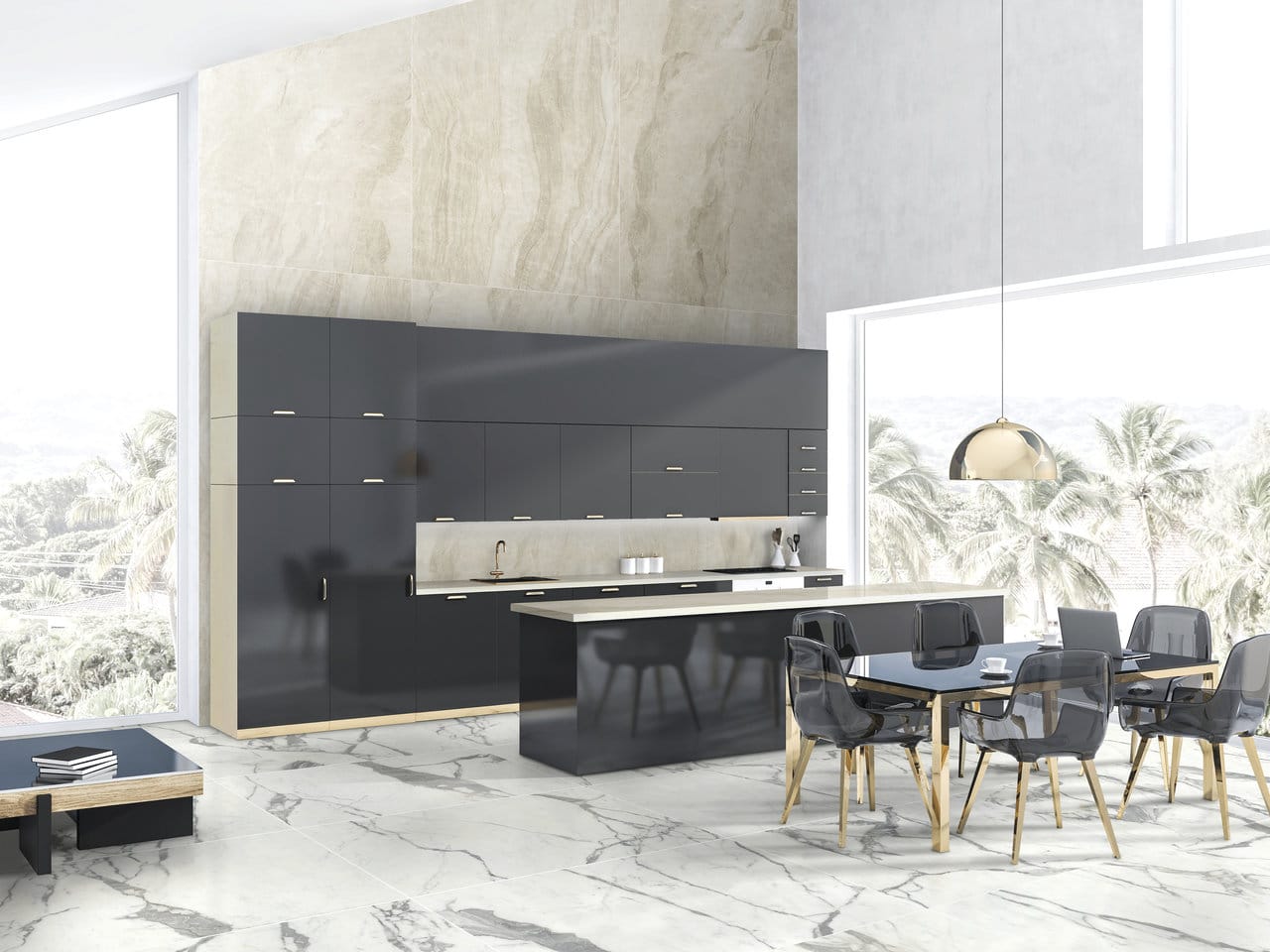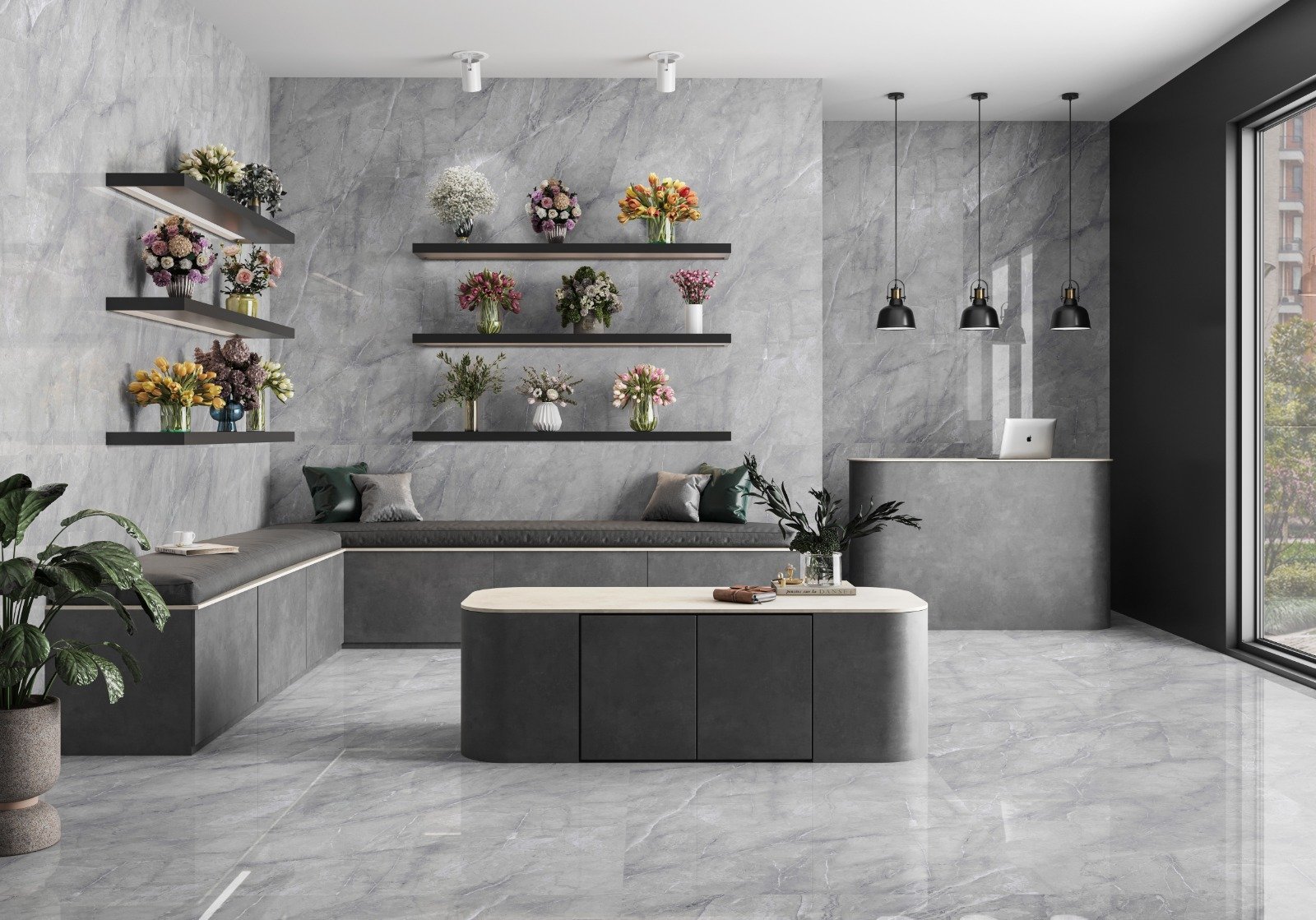From Isfahan to Yerevan: How Iran’s Tile Industry Can Pave the Way in Armenia’s Construction Boom
The skyline of Yerevan is alive with the metallic symphony of construction. Cranes dance against the backdrop of Mount Ararat, and the foundational skeletons of new residential complexes, modern office buildings, and chic hotels rise from the ground at an astonishing pace. This is the face of Armenia’s construction boom—a dynamic, powerful, and opportunity-laden transformation. Just across the southern border, another powerhouse is humming with a different kind of energy. In the sprawling factories of Yazd and Isfahan, Iran’s world-class ceramic and tile industry is producing millions of square meters of high-quality, beautifully designed tiles, ready for a market that demands both excellence and value.
This geographical and industrial proximity is no mere coincidence; it’s the blueprint for a monumental economic partnership. While European and Chinese manufacturers may seem like the default suppliers for a burgeoning market, Iran holds a unique and powerful set of advantages that position it as the ideal partner for Armenia’s growth. This isn’t just about selling tiles; it’s about strategically integrating into the very fabric of Armenia’s future.
This comprehensive analysis will delve into the heart of this opportunity. We will explore the powerful forces driving Armenia’s construction surge, dissect the unparalleled competitive advantages of the Iranian tile industry, and provide a practical, step-by-step roadmap for Iranian manufacturers to successfully penetrate and thrive in the Armenian market. For Iranian exporters, investors, and Armenian developers, understanding this synergy is the key to unlocking immense value.

The Armenian Phoenix: Understanding the Driving Forces Behind the Construction Surge
To fully grasp the opportunity, one must first understand the “why” behind Armenia’s transformation. The current construction boom is not a fleeting trend; it is a result of a powerful convergence of economic, social, and political factors that have created a fertile ground for sustained growth.
Economic Stability and Pro-Business Reforms
In recent years, Armenia has experienced significant economic growth, underpinned by a government keen on attracting foreign investment and simplifying business operations. The country has made notable strides in improving its business climate, reducing bureaucratic red tape, and implementing reforms that protect investors. This stability has infused confidence into the market, encouraging local and international developers to launch ambitious projects. The financial sector has also matured, offering better financing options for large-scale construction, making it easier for developers to secure the capital needed to break ground.
The Tech Boom and the Influx of Skilled Professionals
Armenia is rapidly earning a reputation as the “Silicon Valley of the Caucasus.” A thriving IT sector has attracted thousands of highly paid tech professionals and digital nomads from around the world, particularly following regional geopolitical shifts. This new demographic has a strong appetite for modern, high-quality living and working spaces. The demand for contemporary apartments, co-working offices, and recreational facilities has skyrocketed, directly fueling the construction of residential and commercial real estate, especially in Yerevan and other major cities. These new residents are discerning consumers, seeking aesthetics and quality that align with international standards—a niche Iranian premium tiles can perfectly fill.
A Tourism Renaissance
Armenia’s rich cultural heritage, stunning landscapes, and renowned hospitality are drawing an ever-increasing number of tourists. This tourism boom has created an urgent need for new infrastructure. Hotels, resorts, guesthouses, restaurants, and cafes are being built or renovated across the country to accommodate this influx. The hospitality industry places a premium on design, durability, and ambiance. Flooring, wall cladding, and decorative tiles are central to achieving the desired look and feel, presenting a massive, specialized market for Iranian tile manufacturers who can offer diverse and ornate designs.
Government-Led Urban and Infrastructure Development
The Armenian government is actively investing in large-scale infrastructure projects. The development of the North-South Road Corridor, aimed at connecting the country’s southern border with Iran to its northern border with Georgia, is a prime example. Such projects not only require industrial-grade materials for their own facilities but also act as economic catalysts, spurring development in the towns and cities along the corridor. Furthermore, urban renewal programs in Yerevan and other cities are replacing aging Soviet-era buildings with modern, energy-efficient structures, creating a consistent demand for all types of building materials, with tiles being a fundamental component.
Iran’s Ceramic Hegemony: A Perfect Match for Armenia’s Needs
With Armenia’s demand clearly established, the question becomes: why Iran? While competitors from Turkey, China, and Europe exist, the Iranian tile industry possesses a unique combination of advantages that makes it an exceptionally well-suited supplier for the Armenian market.
1. The Unbeatable Advantage of Proximity and Logistics
This is perhaps Iran’s most significant strategic asset. The short geographical distance between the two countries, connected by the Norduz-Agarak border crossing, drastically reduces transportation time and costs compared to sea-freight-dependent competitors. A truck laden with tiles can travel from manufacturing hubs in northern Iran to Yerevan in a fraction of the time it would take a container ship to arrive from China or Europe. This leads to:
- Lower Landed Costs: Reduced fuel and freight charges translate directly into a more competitive final price for the Armenian buyer.
- Faster Delivery Times: Developers can operate with tighter project timelines and reduced inventory, ordering materials as needed rather than months in advance.
- Greater Flexibility: Smaller, more frequent shipments are economically viable, allowing for more customized orders and better inventory management for Armenian distributors.
2. A World-Class Industry Offering Quality and Diversity
The Iranian ceramic and tile industry is no longer just a regional player; it is a global force. Decades of investment in Italian and Spanish technology have resulted in state-of-the-art manufacturing facilities. This allows Iranian producers to offer:
- A Vast Product Range: From cost-effective ceramic tiles for large-scale housing projects to high-end, full-body polished porcelain tiles for luxury hotels and offices, the Iranian portfolio is immense. They produce tiles in all conceivable sizes, finishes (matte, glossy, textured), and designs.
- Adherence to International Standards: Top Iranian manufacturers produce tiles that meet or exceed ISO and European (EN) standards for water absorption, breaking strength, and chemical resistance. This quality assurance is crucial for gaining the trust of Armenian architects and engineers.
- Design Innovation: Iranian companies are increasingly investing in design, offering everything from minimalist and contemporary styles to intricate patterns inspired by Persian art, which often resonates with Armenian aesthetic sensibilities.
3. Unparalleled Cost-Effectiveness
Iran’s competitive edge on price is not due to inferior quality but to favorable domestic economic factors. Access to abundant and inexpensive energy (natural gas), a skilled and affordable labor force, and locally sourced raw materials allows Iranian factories to maintain low production costs. When this manufacturing efficiency is combined with the low logistical costs mentioned earlier, the result is a final product that can often offer the quality of a European tile at a price point closer to a Chinese one—a value proposition that is incredibly compelling for Armenian developers focused on maximizing their return on investment.
4. Cultural and Economic Synergy
The long-standing historical and cultural ties between Iran and Armenia create a foundation of trust and understanding that cannot be easily replicated.
- Aesthetic Alignment: There is a shared appreciation for certain design motifs, intricate patterns, and rich color palettes that can make Iranian designs a more natural fit for the local market than generic international styles.
- EAEU Membership: Armenia is a member of the Eurasian Economic Union (EAEU). While Iran is not a full member, it has a preferential trade agreement with the bloc, which can simplify customs procedures and reduce tariffs on certain goods, including building materials. This economic alignment facilitates smoother trade relations compared to countries outside this framework.

Paving the Path: A Strategic Guide to Entering the Armenian Market
Capitalizing on this opportunity requires more than just loading up a truck with tiles. A strategic, well-researched approach is essential for long-term success. Here is a practical roadmap for Iranian exporters.
Phase 1: Deep Market Intelligence and Due Diligence
Before a single tile is shipped, comprehensive research is paramount.
- Understand Local Tastes and Trends: What sizes are popular in the residential market (e.g., 60x60cm, 120x60cm)? What finishes are preferred for commercial spaces? Analyze new construction projects in Yerevan to identify current trends.
- Identify Key Players: Map out the major construction companies, real estate developers, architectural firms, and, most importantly, the largest building material importers and distributors in Armenia. These are your potential partners and clients.
- Know the Competition: Analyze the pricing, product range, and marketing strategies of Turkish, Chinese, and European brands already present in the market. Identify their weaknesses. Is their supply chain slow? Is their pricing too high for the mid-range market? This is where you can position your brand.
- Learn the Standards and Certifications: What are the specific technical requirements or building codes in Armenia? Ensure your products have the necessary quality certificates (like ISO 9001) and technical data sheets translated into English or Russian.
Phase 2: Navigating the Logistics and Legal Framework
- Mastering the Customs Process: Work with an experienced customs broker who specializes in Iran-Armenia trade. They will be invaluable in navigating the documentation required, including the Certificate of Origin, packing lists, commercial invoices, and any EAEU-related paperwork. A smooth customs process is critical to maintaining your speed advantage.
- Choosing the Right Logistics Partner: Don’t just pick the cheapest trucking company. Select a reliable logistics partner with a proven track record of cross-border freight between Iran and Armenia. They should offer real-time tracking, proper insurance, and understand the specific handling requirements for fragile materials like tiles.
- Warehousing and Distribution: For serious market penetration, consider establishing a warehousing presence in or near Yerevan. This allows you to hold stock locally, offering immediate delivery to clients—a massive competitive advantage over rivals who ship on a per-order basis. You can either set up your own facility or partner with a local 3PL (Third-Party Logistics) provider.
Phase 3: Building a Powerful Sales and Marketing Strategy
- Establish a Local Presence: The Armenian market values personal relationships. You need a face on the ground. This could be:
- A Local Agent/Representative: An individual who knows the market, speaks the language, and can represent your brand to potential clients.
- A Partnership with a Distributor: This is often the most effective route. A well-established Armenian distributor already has a showroom, a sales team, and a network of clients.
- A Joint Venture or Showroom: For major players, opening a dedicated showroom in Yerevan can make a powerful statement and allow you to showcase your full product range directly to architects and developers.
- Targeted Digital Marketing: Create a professional website and product catalogs in English and Russian (and ideally, Armenian). Use digital marketing to target Armenian architects, interior designers, and construction procurement managers on platforms like LinkedIn and through targeted Google Ads.
- Participate in Industry Trade Shows: Exhibiting at events like Caucasus Build in Yerevan is a non-negotiable. It is the single best opportunity to meet all the key decision-makers in the industry, showcase your products, and build your network in a short period.
Phase 4: Fostering Relationships and Providing Excellent Service
- Customer Support: Offer excellent pre-sales and after-sales support. Provide technical specifications, installation guidelines, and be responsive to inquiries.
- Flexibility and Customization: Be prepared to offer some level of customization for large projects. This could involve producing a specific design or size for a major hotel or residential complex.
- Build Trust: Business in the Caucasus is built on trust. Be reliable, honor your commitments, ensure consistent quality, and invest in long-term relationships rather than short-term profits.
Navigating the Bumps in the Road: Potential Challenges and Solutions
The path to success is not without its obstacles. A realistic assessment of the challenges is crucial for effective planning.
- Challenge: Banking and Financial Transactions: International sanctions on Iran can complicate financial transactions.
- Solution: Work with financial institutions and legal advisors who have experience in Iran-related trade. Explore options like using third-country banking (e.g., through banks in the UAE or Turkey), leveraging bilateral banking agreements between Iran and Armenia if available, or using established currency exchange houses that operate legally in both countries.
- Challenge: Perceptions of Quality: Some buyers may have a preconceived notion that European products are inherently superior.
- Solution: Combat this with evidence. Provide internationally recognized quality certificates, offer samples for testing, showcase successful case studies of high-end projects that used your tiles, and invite key decision-makers to visit your state-of-the-art factories in Iran.
- Challenge: Competition: The market is not empty. Turkish and Chinese suppliers are active.
- Solution: Do not compete solely on price. Compete on your unique value proposition: the trifecta of Quality, Price, and Proximity. Emphasize the speed of delivery, the superior design options, and the overall value you provide.
- Challenge: Bureaucracy: While improving, navigating customs and business registration can still be complex.
- Solution: Do not attempt to do it alone. Allocate a budget for local legal and customs expertise. A good local partner will pay for themselves many times over by preventing costly delays and errors.

The Tiled Path to a Prosperous Future
The construction cranes dotting the Yerevan skyline are a clear signal: Armenia is building its future, and it needs quality materials to do so. The advanced factories of Iran are ready to supply them. This is a rare moment of perfect synergy—a booming market in desperate need of a product that its next-door neighbor produces with world-class quality and unbeatable efficiency.
For the Armenian construction industry, embracing Iranian tiles means faster project completion, lower costs without compromising on quality, and access to a vast portfolio of designs. For the Iranian tile industry, this is more than just another export market; it is a gateway, a strategic partnership, and a chance to become the foundational aesthetic of a nation on the rise.
Success will not come from passive opportunism but from strategic, committed, and relationship-focused engagement. By understanding the market, navigating the challenges with expert guidance, and highlighting their unique value proposition, Iranian tile manufacturers can do more than just sell a product. They can pave the way for a stronger economic future for both nations, one beautifully tiled square meter at a time.
قیمت های موجود در سایت تاریخ بروزرسانی آن ها ذکر شده و قیمت نهایی محصولات نمی باشند. لطفا جهت ثبت سفارش و استعلام قیمت بروز با کارشناسان ما در ارتباط باشید.
(035-3357)